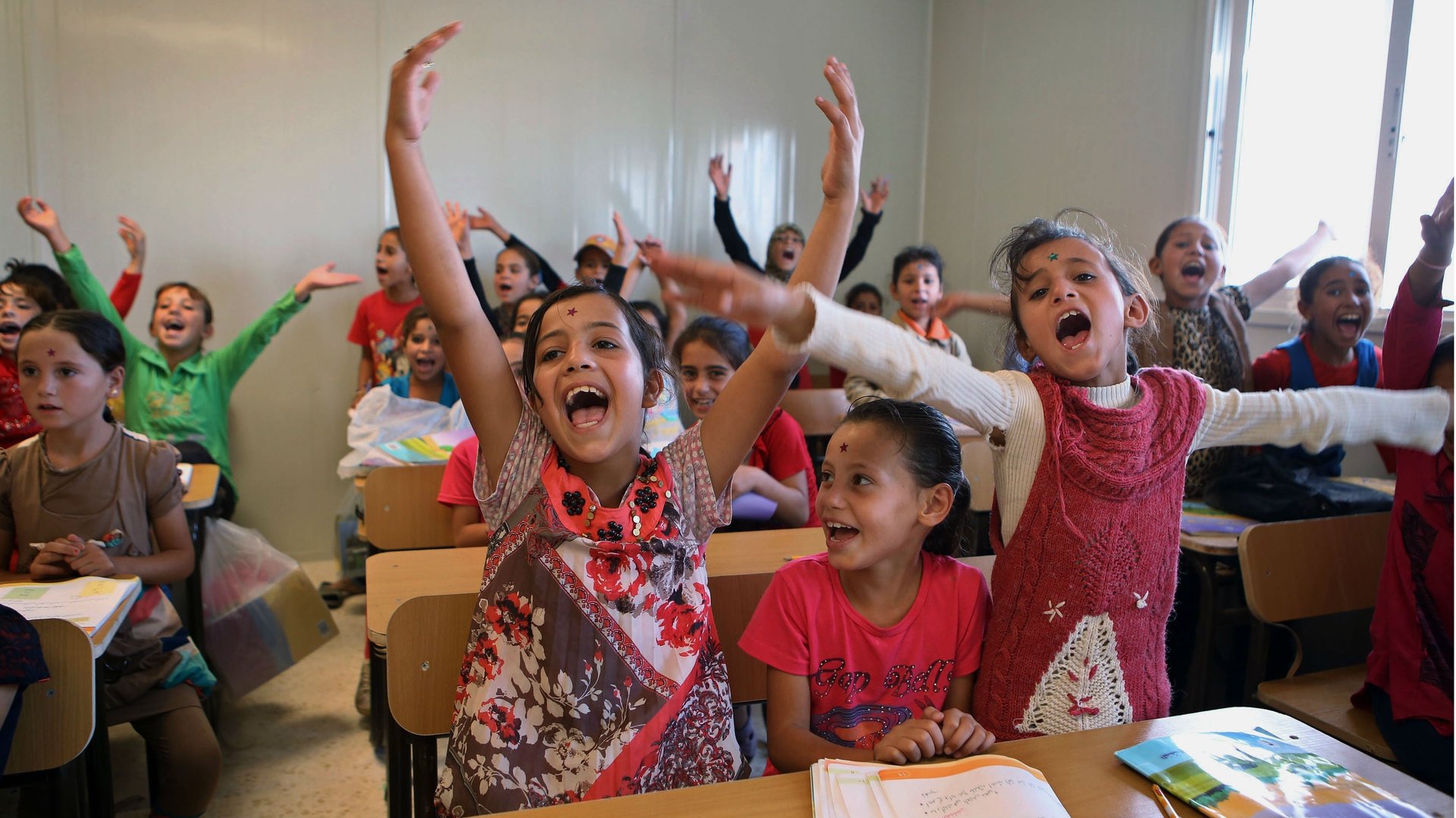The Syrian war is forcing girls in Jordanian refugee camps to become child brides
The fifth of the Sustainable Development Goals (SDG) recently adopted by the UN is to “achieve gender equality and empower all women and girls” by 2030. Among other things, the goal includes eliminating child marriage.


The fifth of the Sustainable Development Goals (SDG) recently adopted by the UN is to “achieve gender equality and empower all women and girls” by 2030. Among other things, the goal includes eliminating child marriage.
It’s the first time the all-too-common practice (defined by the UN as brides who are under age 18) has made it onto the list of top global priorities, in part because the number of child brides around the world is growing rapidly. The uptick corresponds with a rise in natural and humanitarian catastrophes, which tend to introduce the practice where it wasn’t predominant before.
One of those places is Syria, where child marriage wasn’t particularly problematic (pdf, p. 28) until 2011. As the war worsened the living conditions of many families, child marriages among Syrian refugees in Jordan went up from 12% to 32% of all registered marriages between 2011 and 2014 (pdf, p. 32).
“Child marriage is not linked to one particular religion or tradition,” Lakshmi Sundaram, director of Girls not Brides, an organization working to end child marriage, tells Quartz, but it’s rather the product of poverty. From Niger, where 75% girls marry before age 18, to Haiti, where a third of them do, child marriages are more likely among families facing extreme hardship or poverty.
Sundaram tells Quartz preliminary studies show that the incidence of child marriage in Nepal, where it was at 41% of all marriages in 2014, has inched up in the aftermath of the earthquake.
Parents might believe marrying off their daughters—often to partners ten or more years older than them (pdf, p. 6)— is their only option to ensure they are taken care of and, Sundaram said, they “don’t necessarily understand the consequence that child marriage can have.”
Child brides are likely to have children very young, and teen pregnancies have a much higher chance of causing deaths than pregnancies where the woman is above 18. That phenomenon has caused yet another emergency in refugee camps in Jordan.